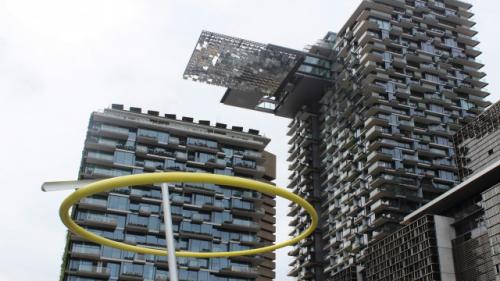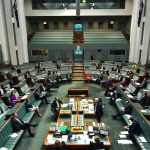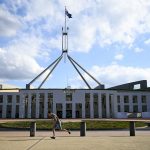Sydney’s urban development signals something great
Sydney is already famous for innovative architecture. Lord Mayor Clover Moore describes an area that is going through an exciting urban development transformation.
Sydney is on the cusp of something great.
Our city is already home to landmark architecture.
Our Opera House is a global icon and our CBD skyline pierced by buildings by Renzo Piano and Harry Seidler.
Just last year, Richard Rogers added the stunning red steel girders of the “8 Chifley” building to the city centre and Richard Francis-Jones created a wonderful new public space for Sydney as well as a unique skyscraper at 161 Castlereagh Street.
At 1 Bligh Street, Architectus, in association with Ingenhoven Architects, have created a building that meets incredibly high standards for design, public art, innovation and sustainability.
But in one corner of our city, something remarkable is unfolding.

Image: AAP/NEWZULU/PETER BOYLE
In a neighbourhood that was once an industrial complex of railway lines, warehouses, a brewery and a newspaper printing press, we are witnessing the urban development of a new precinct of design and innovation that will be world-leading.
In fact, Chippendale and Ultimo are going through an urban development transformation driven by some of the world’s best architects.
On the former Carlton United Brewery, now known as Central Park, Frasers Property and Seikisui House have employed world-leading architects, including Jean Nouvel and landscape architect Patrick Blanc, to build a unique exclamation mark at the edge of Sydney’s CBD.
Working with the City of Sydney and the local community, they are creating buildings that match design excellence with outstanding sustainability.
The City, Eureka Funds Management and Frasers Property have signed an historic $26.5 million Environmental Upgrade Agreement (EUA) to install a highly-efficient, gas-powered trigeneration plant.
The plant, capable of producing 2 megawatts of energy for 14 buildings and thousands of people, will ensure the entire area is powered by low-carbon, locally-produced energy.
Central Park will also have a Membrane Bioreactor (MBR) to provide recycled water for 4,000 residents, with more than 15,000 workers and visitors expected each day. Residents will use between 40 and 50 percent less drinking water than a standard apartment, saving money and water supplies. As for the vertical gardens and unique heliostat atop Jean Nouvel’s building, these features have already become a talking point – their success will help encourage other developers to think outside the square.
As the Central Park site is finished it will add buildings by Pritzker Prize winner Norman Foster and award-winning Sydney-based Johnson Pilton Walker.
On the other side of Broadway, another unique piece of architecture is taking shape – UTS’s new Faculty of Engineering and Information, designed by Denten Corker Marshall. The incredible façade of aluminum, perforated with the tiny 1s and 0s of computer programming languages, appears strong, but delicate.
A few minutes’ walk away, the architectural ambition grows. The Dr Chau Chak Wing Building – the first building in Australia designed by Frank Gehry – is growing brick by brick into something exceptional. On what was previously a Dairy Farmers cooperative, Gehry has employed his signature style to create what he calls a cluster of tree-houses, with materials that appear to curve and fold like soft fabric.
Linking this area to Darling Harbour (which is itself being redeveloped) is the Goods Line – a new public space currently being designed by ASPECT Studios with collaborating architects Choi Ropiha Fighera. When finished, this project will provide a seamless connection for pedestrians and bike riders from the creative hub of Surry Hills to the home of Sydney’s growing education, tech, start-up and entrepreneurial community in Ultimo and Pyrmont.
As Lord Mayor, I have been a passionate advocate for high-quality, well-designed public and private developments that benefit our city. These projects are not just outstanding in their own right, they are creating a centre for design excellence, innovation and creativity that will help ensure Sydney’s place as a leading global city.
They signal that Sydney is now a city that strives for sustainable, ground-breaking design – one that actively pushes the boundaries in pursuit of excellence.
This article first appeared in The Big Smoke and is republished with the permission of the author.
Clover Moore is Lord Mayor of the City of Sydney – the first popularly elected woman in the role. Under her independent leadership, Sydney has developed a global reputation for taking ambitious action on climate change, delivering award-winning facilities, protecting open space, promoting design excellence, delivering new transport options and initiating progressive solutions to complex social problems.













